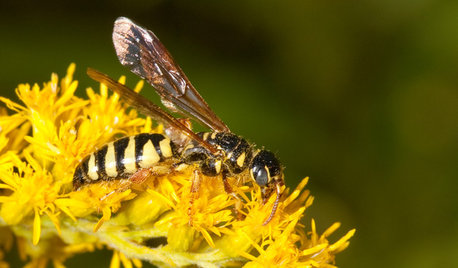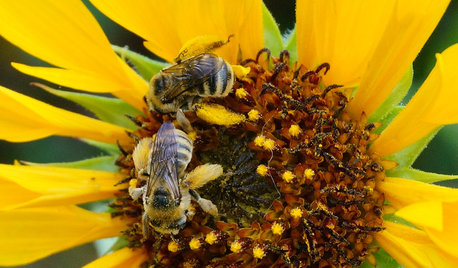Raising beneficial nematodes
pkapeckopickldpepprz
12 years ago
Related Stories

EARTH DAYHow to Help Your Town’s Beneficial Birds and Bugs
Make a habitat using local materials to provide a home to the creatures that help our gardens
Full Story
FARM YOUR YARDHow to Build a Raised Bed for Your Veggies and Plants
Whether you’re farming your parking strip or beautifying your backyard, a planting box you make yourself can come in mighty handy
Full Story
GARDENING GUIDESInvite Mining Bees to Your Garden by Planting Their Favorite Plants
Look for mining bees (Andrena) pollinating woodland wildflowers in U.S. gardens this spring
Full Story
GARDENING GUIDESAttract Thynnid Wasps With Summer-Flowering Native Plants
These beneficial insects will hunt damaging beetle grubs in your lawn
Full Story
GARDENING GUIDESUnleash Your Guerilla Gardener
Toss some seed bombs around the yard for easy, beneficial plantings
Full Story
EARTH DAYHow to Design a Garden for Native Bees
Create a garden that not only looks beautiful but also nurtures native bees — and helps other wildlife in the process
Full Story
EARTH DAY12 Entertaining ‘Bee-haviors’ of Native Bees
The parade of pollinator antics is another reason to create a garden that nurtures native bees
Full Story
BENEFICIAL INSECTSAttract Pollinators for a Productive Edible Garden
You can lure bees, butterflies and birds into your yard with the right flowers and nesting spots
Full Story
GARDENING AND LANDSCAPINGBid Bad Garden Bugs Goodbye and Usher In the Good
Give ants their marching orders and send mosquitoes moseying, while creating a garden that draws pollinators and helpful eaters
Full Story
GARDENING FOR BUTTERFLIESGardening for the Bees, and Why It’s a Good Thing
When you discover how hard bees work for our food supply, you may never garden without them in mind again
Full Story







pkapeckopickldpepprzOriginal Author
shuffles_gw
Related Professionals
Owings Mills Landscape Architects & Landscape Designers · Saint Charles Landscape Architects & Landscape Designers · Arlington Landscape Contractors · Clayton Landscape Contractors · Laguna Hills Landscape Contractors · Lewisville Landscape Contractors · Old Saybrook Landscape Contractors · Palos Hills Landscape Contractors · Gladstone Decks, Patios & Outdoor Enclosures · Kyle Decks, Patios & Outdoor Enclosures · Palm Beach Gardens Decks, Patios & Outdoor Enclosures · Verona Decks, Patios & Outdoor Enclosures · Beverly Hills Siding & Exteriors · East Brunswick Siding & Exteriors · Lenoir Siding & ExteriorspkapeckopickldpepprzOriginal Author
pkapeckopickldpepprzOriginal Author
Carol love_the_yard (Zone 9A Jacksonville, FL)
pkapeckopickldpepprzOriginal Author
Carol love_the_yard (Zone 9A Jacksonville, FL)
shuffles_gw
pkapeckopickldpepprzOriginal Author
stevo_in_socal
stevo_in_socal
jane__ny